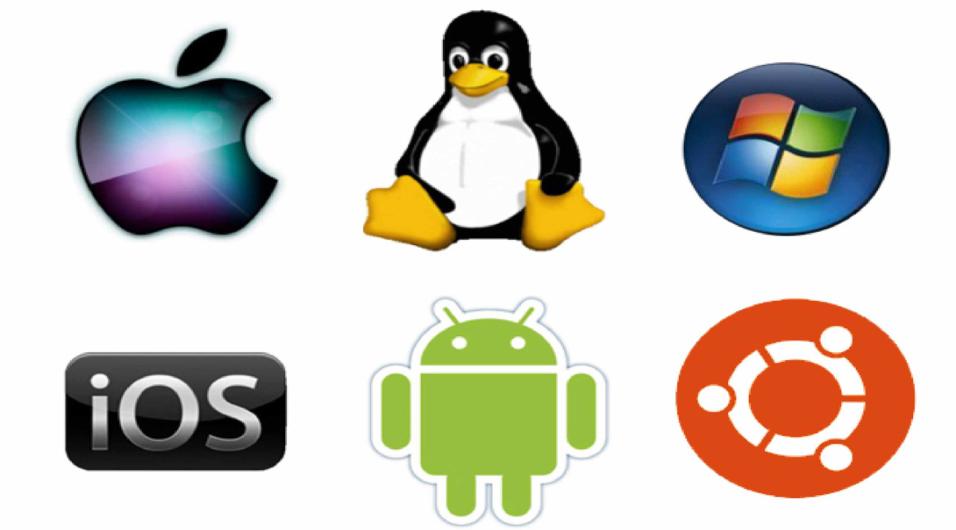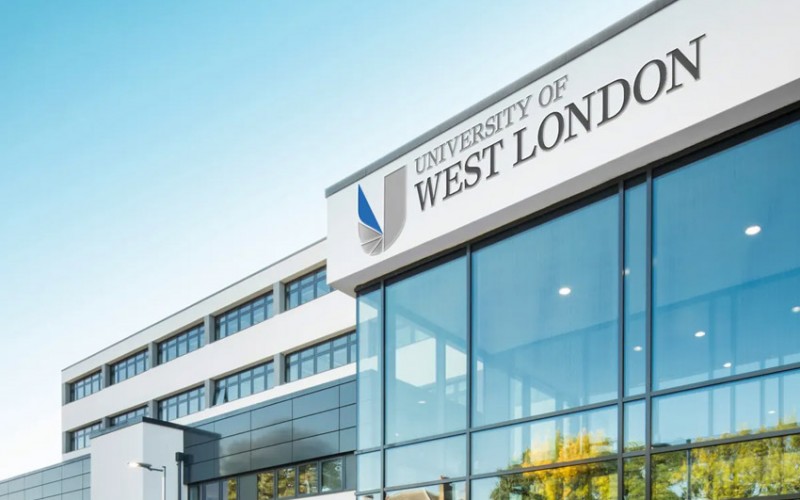
The Role and Function of Operating Systems in Information Technology
Operating systems serve as the backbone of modern information technology systems, playing a pivotal role in managing hardware resources, ensuring system security, and facilitating user interactions. The historical development of operating systems has been marked by key milestones, from the rudimentary functionalities of early systems to the sophisticated capabilities of contemporary platforms. Technological advancements have been instrumental in shaping the evolution of operating systems, enabling them to adapt to changing computing paradigms and user requirements. This research paper aims to provide a comprehensive overview of the core functions, types, and architecture of operating systems, shedding light on the diverse landscape of desktop, mobile, and server operating systems. By examining the kernel's role, system security protocols, and the different architectural paradigms, this paper seeks to elucidate the intricate workings of operating systems. Furthermore, by exploring future trends such as cloud computing integration, enhanced security protocols, and emerging technologies, this research endeavors to forecast the trajectory of operating systems and their impact on the broader information technology landscape.
Historical Development of Operating Systems
What were the key milestones in the evolution of operating systems?
One of the significant milestones in the evolution of operating systems is the development of the IBM OS/360. Introduced in the mid-1960s, the IBM OS/360 was designed for the IBM System/360 family of computers, which marked a pivotal moment in the history of operating systems by offering a comprehensive suite of software capabilities that were previously unheard of. This system introduced the concept of a single operating system that could run on a range of hardware configurations, providing unprecedented flexibility and efficiency for businesses, which enabled them to scale their operations without needing to overhaul their software infrastructure. Additionally, the OS/360 incorporated advanced features such as multitasking and multiprogramming, which significantly improved resource utilization and processing speed, setting a new standard for future operating systems. The success of the OS/360 demonstrated the importance of having a robust and versatile operating system that could manage complex computing tasks, paving the way for subsequent innovations in the field, including the development of other influential systems like UNIX and VAX/VMS.
How did early operating systems differ from modern ones?
The focus of early operating systems primarily lay in batch processing and efficient resource management, contrasting sharply with the interactive nature of modern systems. Given the technological constraints of the era, services offered by early operating systems were limited and tailored to the hardware capabilities available at the time. For instance, early systems emphasized shared multiprogramming, enabling multiple users to share computational resources while minimizing idle time and maximizing efficiency. This was achieved by multiplexing a single processor and limited memory among several computations, creating an illusion of concurrency despite the strictly sequential operation of hardware components. Additionally, early operating systems were designed to facilitate basic tasks such as process synchronization, store management, scheduling, and resource protection, which were crucial for maintaining system stability and efficiency. In contrast, modern operating systems have expanded their scope significantly, incorporating advanced features like sophisticated input/output handling, comprehensive filing systems, and user-friendly interfaces. This evolution reflects a broader understanding of computer science and user needs, marking a significant shift from the simpler, more focused objectives of early systems.
What role did technological advancements play in the development of operating systems?
The advent of time-sharing systems marked a significant milestone in the evolution of operating systems, transforming the way computational resources were utilized and managed. Prior to this, early operating systems were centered around batch processing, which involved executing a series of jobs without human interaction. The shift to time-sharing allowed multiple users to interact with a computer simultaneously, drastically improving efficiency and user experience. This innovation was instrumental in the development of more complex and interactive operating systems, as it necessitated the creation of sophisticated scheduling, memory management, and resource allocation techniques. Furthermore, the close relationship between operating systems and computer architecture was evident in the IBM System/360 family of computers. The operating systems developed for this hardware, such as OS/360, MVS, and VM, played a pivotal role in shaping modern operating system design by introducing concepts like virtual memory and multitasking. These advancements not only enhanced the performance and capabilities of the operating systems but also set the stage for future developments in computer science and technology. As a result, the continuous interplay between hardware innovation and operating system development has been a driving force in the progression of computing technology, underscoring the need for ongoing research and development in this field.
Core Functions of Operating Systems
What are the primary responsibilities of an operating system?
The primary responsibilities of an operating system encompass a wide array of tasks crucial for the efficient and reliable operation of a computer system. At its core, an operating system must manage the sharing of computational resources among multiple users, a task that involves balancing and scheduling jobs with varying resource requirements to ensure fair and effective resource allocation. This necessitates adept process synchronization, store management, scheduling, and resource protection, which collectively form the backbone of the operating system's role. The complexities involved in these tasks are akin to those faced in other substantial software projects, such as compilers or payroll systems, underscoring the importance of meticulous design and implementation. Additionally, the operating system must contend with unpredictable demands from independent users, requiring it to be both responsive and adaptable to maintain system stability and user satisfaction. As technological advancements continue to shape the landscape of computing, operating systems must evolve to leverage these changes while respecting inherent technological limitations to optimize performance. Ultimately, the operating system's ability to efficiently manage and protect resources, synchronized processes, and schedule tasks is paramount to the seamless operation of modern computing environments.
How do operating systems manage hardware resources?
As operating systems evolved, their role in managing hardware resources became more sophisticated, incorporating mechanisms to control how applications access and share these resources. Modern operating systems, for instance, implement various strategies to prevent resource contention and enhance performance. One such approach involves the use of shares, which allow applications to dynamically create and manage lookup tables for hardware resources, thereby reducing unnecessary contention over shared kernel data structures. This share abstraction permits each application's core to start with a private root share, ensuring isolation and efficient resource management. Additionally, operating systems like Corey are designed to avoid scalability bottlenecks by ensuring that independent applications do not contend over resources managed by the kernel, significantly outperforming traditional systems like Linux on multicore machines. These methods underscore the critical role of innovative resource management techniques in maximizing the efficiency and performance of modern computing systems, necessitating continuous advancements and refinements in operating system design.
What processes are involved in system security and user management?
Modern operating systems not only provide interactivity but also manage complex tasks efficiently. One of the key processes involved in system security and user management is memory management, which emphasizes the abstraction of a virtual address space. This abstraction is crucial because it allows each process to operate as if it has its own private memory, thereby enhancing security and stability by preventing processes from interfering with each other. Additionally, modern operating systems must manage tasks dynamically, providing functions such as task creation, deletion, suspension, resumption, and priority setting. These capabilities are critical for multitasking environments where multiple applications run simultaneously and need to be managed without compromising system performance or security. Another significant trend influencing system security and user management is the advent of multi-core architectures, which necessitate new operating system abstractions to effectively utilize the parallel computing power available. By dedicating certain cores to specific functions, systems can achieve higher efficiency and security, as each core can be optimized for particular tasks, reducing the risk of process interference and system vulnerabilities. These interconnected processes highlight the complexity of modern operating systems and underscore the need for continuous advancements to maintain and enhance system security and user management.
Types of Operating Systems
What are the different types of operating systems available?
Operating systems are the foundational software that manage computer hardware and software resources and provide common services for computer programs. They can be broadly categorized into several types, each tailored for specific tasks and environments. Batch operating systems, for instance, are designed for executing large volumes of similar jobs without user interaction, which is useful in data processing scenarios. Multiprogramming operating systems, on the other hand, allow multiple programs to run concurrently by managing resources efficiently and ensuring that the CPU is never idle, enhancing system utilization. Network operating systems are specialized for managing network resources, enabling data exchange and communication across different systems connected via a network. Real-time operating systems are crucial in environments where timely processing is of essence, such as in embedded systems, and they are further divided into hard real-time systems, which require strict timing constraints, and soft real-time systems, which are more flexible. Distributed operating systems manage a group of independent computers and make them appear to be a single computer, offering seamless resource sharing and enhanced computational capabilities. Finally, mobile operating systems like Android and iOS are tailored for mobile devices, providing user-friendly interfaces and optimizing battery usage [9]. These various types of operating systems reflect the diverse needs of modern computing environments and are essential to the functioning of different devices and applications.
How do desktop operating systems differ from mobile operating systems?
The evolution of operating systems has led to distinct paths for desktop and mobile platforms, reflecting their unique use cases and hardware constraints. Desktop operating systems are characterized by their ability to handle more complex tasks and run on higher-performance processors, which is essential for applications requiring substantial computational power, such as video editing software and large-scale data analysis tools. This complexity is mirrored in their more extensive functionalities, offering users a broad range of capabilities such as advanced file management, multi-monitor support, and extensive networking features. Conversely, mobile operating systems are optimized for touch interactions and small screens, necessitating a more streamlined and intuitive user interface to facilitate ease of use on the go. The user interface design for mobile devices must consider the limitations imposed by smaller screen sizes and touch input methods, which often results in applications with simplified functionalities to enhance performance and user experience. This dichotomy in design philosophy also extends to the availability and power of applications; while desktop operating systems host fewer but more powerful and complex applications, mobile operating systems boast a vast array of apps, albeit generally simpler in their capabilities. Therefore, developers need to tailor their applications to suit the specific operating system, ensuring optimal performance and user satisfaction across both platforms. Understanding these differences is crucial for users and developers alike, as it influences the choice of devices and the design of software solutions to meet diverse needs and preferences.
What are the unique features of server operating systems?
Server operating systems possess unique features that set them apart from desktop operating systems, primarily due to their design and purpose. Unlike desktop operating systems, which are optimized for single users and lightweight tasks, server operating systems are built to handle the complexities of client-server architectures and enterprise IT environments. One of the core aspects of a server operating system is its ability to manage multiple users concurrently, ensuring that multiple client requests can be processed efficiently without compromising on performance. This capability is crucial for maintaining uninterrupted operations, especially in environments where downtime can lead to significant losses. Moreover, server operating systems are equipped with advanced security features to safeguard sensitive data and prevent unauthorized access, thereby maintaining the integrity and confidentiality of the information being processed. The management of vast amounts of data is another critical responsibility of server operating systems, allowing them to store, retrieve, and manipulate large datasets with ease. Additionally, these operating systems are designed to streamline administrative tasks, reducing the complexity of managing server environments and minimizing downtime, thus enhancing overall system reliability. Furthermore, server operating systems provide specialized services such as database management, user management, and network traffic control, which are essential for supporting the various functions that servers perform in a networked environment. To achieve optimal stability, data security, and resource management, these operating systems are continually optimized, ensuring that they can handle high network loads and parallel computing tasks effectively. Overall, the unique features of server operating systems make them indispensable for modern IT infrastructures, necessitating targeted interventions to ensure their smooth operation and to address any emerging challenges.
Operating System Architecture
What are the main components of an operating system's architecture?
One of the core components of an operating system's architecture is resource management, which varies significantly between traditional and modern paradigms. In traditional operating systems, resource management is tightly coupled with resource protection, and this responsibility is typically confined to trusted software components such as privileged servers or the kernel. This means that only the most secure and reliable parts of the system have the authority to allocate and control resources, ensuring that the system remains stable and secure. However, in more innovative architectures like the exokernel, resource management is decoupled from protection. The exokernel itself focuses solely on the protection of resources, while the management tasks are delegated to untrusted application-level software. This separation allows for more flexible and efficient resource utilization, as applications can tailor resource management to their specific needs without compromising overall system security. Additionally, modern operating system architectures often incorporate specialized facilities designed to optimize performance in virtual-machine environments. These facilities can include various assists or enhancements specifically added to support the unique demands and operational characteristics of virtual machines. By understanding these distinct approaches to resource management and the architectural elements that support them, developers can better design systems that are both secure and efficient.
How does the kernel function within an operating system?
The evolution of operating systems has led to the development of sophisticated kernel architectures, such as the nested kernel, which address significant security challenges inherent in monolithic designs. Traditional monolithic kernels, as seen in systems like Windows, Linux, and MacOS, are susceptible to single-point exploits that can grant an attacker full supervisor privileges, thereby compromising the entire system's security. The nested kernel architecture mitigates this by nesting a small, isolated kernel within the larger monolithic kernel, significantly enhancing security by enforcing kernel code integrity and preventing code injection attacks. For instance, in the FreeBSD implementation on x86-64 hardware, the nested kernel architecture allows even untrusted components to operate at the highest hardware privilege level by write-protecting Memory Management Unit (MMU) translations and de-privileging the untrusted parts of the kernel. This design not only reduces the trusted computing base for memory access control but also introduces mechanisms such as write-mediation and write-logging services to protect critical system data structures, something not achievable in monolithic kernels. Consequently, as operating systems continue to evolve, adopting nested kernel architectures presents a robust solution to bolster security and maintain system integrity against sophisticated exploit attempts.
What are the differences between monolithic, microkernel, and hybrid architectures?
The monolithic architecture, microkernel architecture, and hybrid architecture each present distinct approaches to operating system design, fundamentally differing in how they manage system resources and interact with hardware. Monolithic architectures encapsulate all operating system services, such as interprocess communication and virtual memory management, within a single large kernel, providing a straightforward but potentially less secure and less flexible system. In contrast, microkernel architectures take a minimalist approach, implementing only the most essential functions within the kernel, such as basic hardware control, while delegating higher-level services to user-space processes. This separation aims to enhance system stability and security, as failures in user-space services do not compromise the entire system. Hybrid architectures, such as the exokernel, blend aspects of both monolithic and microkernel designs. In an exokernel, the small kernel focuses on securely multiplexing hardware resources among applications, allowing more direct and efficient resource management by the applications themselves. This approach seeks to combine the performance advantages of monolithic systems with the modularity and security benefits of microkernels. Understanding these differences is crucial for developing effective and efficient operating systems that balance performance, security, and flexibility.
Future Trends in Operating Systems
What emerging technologies are influencing the future of operating systems?
One of the most significant emerging technologies influencing the future of operating systems is virtualization. Virtual machine technology has become a major research topic due to its potential to efficiently aggregate data, software, and hardware resources for various tasks. This technology offers features such as performance isolation, server consolidation, and live migration, which are essential for optimizing resource utilization and enhancing system flexibility. Additionally, the management mode of future memory and resources will play a pivotal role in shaping how operating systems evolve, ensuring that systems can handle the increasing demands and complexities of modern computing environments. As hardware costs continue to decrease and capabilities increase, virtualization technology also addresses the proliferation of underused resources and the associated management overhead. By leveraging these advancements, virtual machine monitors (VMMs) can provide novel solutions to the challenges of security, reliability, and administration, thereby shaping the future trajectory of operating systems.
How are operating systems adapting to the rise of cloud computing?
As cloud computing continues to proliferate, operating systems are evolving to meet the demands of this new paradigm, particularly by offloading compute-intensive tasks to server systems. This shift indicates that the true challenges for future operating systems and middleware will predominantly reside on the server side, necessitating robust, scalable, and efficient server OS architectures to handle the increased load. Virtual Machine Monitors (VMMs) are playing a crucial role in this transformation, providing operating system developers with opportunities to innovate and implement functionalities that traditional, monolithic operating systems can no longer accommodate due to their complexity and rigidity. Furthermore, the trends in virtual machine systems, including future CPU architectures and management modes, are essential to translating operating system instructions effectively in a cloud environment, thus ensuring seamless integration and performance. These adaptations are crucial as they enable operating systems to support diverse and dynamic workloads, maintain system stability and security, and provide the flexibility required for future technological advancements. Therefore, ongoing research and development in these areas are imperative to address the challenges posed by the rise of cloud computing.
What are the potential advancements in security and efficiency for future operating systems?
To achieve significant advancements in the security and efficiency of future operating systems, there must be a concentrated effort on minimizing security vulnerabilities and enhancing code quality. One crucial approach is the utilization of multiple Security Assessment Tools (SATs) to identify and remediate security errors, particularly in IoT operating systems (OSs). This can be extended to files written in various scripting languages such as Python, Perl, and Ruby, which are increasingly being used in IoT applications. Furthermore, the investigation of Code Health, which includes analyzing factors such as code complexity and change frequency, can lead to a reduction in the total number of security errors, thereby enhancing the overall efficiency of the OS. Future OSs can also benefit from advancements in automatic program repair tools and vulnerability remediation techniques, which are essential for addressing security issues promptly and efficiently. Additionally, focusing on reducing code hotspots and improving the Qualitative Team Experience can contribute significantly to enhancing both security and efficiency [28]. Collectively, these strategies underscore the importance of an integrated approach that not only identifies and mitigates vulnerabilities but also promotes long-term improvements in code quality and system robustness.
The evolution of operating systems in Information Technology has been a fascinating journey, transitioning from the early focus on batch processing and resource management to the sophisticated, interactive systems we rely on today. Early operating systems, such as the IBM OS/360, laid the foundation for modern systems by introducing advanced features like multitasking and multiprogramming, revolutionizing resource utilization and processing speed. The significance of robust operating systems like OS/360 cannot be overstated, as they set the standard for future innovations in the field, leading to the development of influential systems like UNIX and VAX/VMS. The role of operating systems has expanded significantly over time, encompassing a wide range of tasks from process synchronization to security enhancements and user-friendly interfaces. The shift towards time-sharing systems marked a pivotal moment, improving efficiency and user experience by allowing multiple users to interact with a computer simultaneously. Furthermore, the advent of virtual machine systems and cloud environments has necessitated continuous advancements in operating system design to meet the demands of dynamic workloads and unpredictable user requirements. The discussion also highlights the importance of innovative resource management techniques, such as nested kernel architectures and Virtual Machine Monitors (VMMs), in enhancing system stability, security, and performance. As operating systems continue to evolve in response to technological advancements, it is crucial to address limitations, such as security vulnerabilities and code quality, while exploring future research directions to optimize system efficiency and support diverse computing environments. The diverse architectures of operating systems, including monolithic, microkernel, and hybrid designs, offer unique approaches to resource management and hardware interaction, underscoring the critical role of operating systems in managing hardware resources effectively. Overall, the discussion emphasizes the integral role of operating systems in Information Technology and the need for ongoing innovation to meet the evolving demands of modern computing environments.







